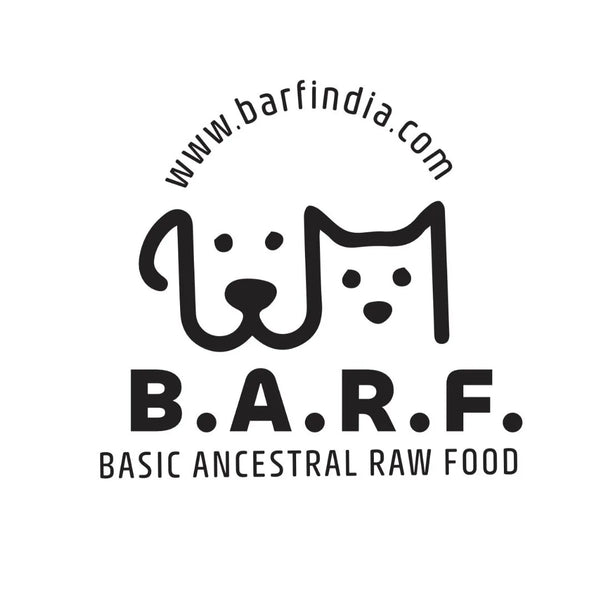
The Bite Behind the Bark: Exploring the Dental Benefits of Raw Bones in Your Dog's Diet
Share
Introduction:
In the pursuit of optimal health for our furry companions, pet owners often find themselves navigating a maze of conflicting advice and trends. One such topic that has gained traction in recent years is the inclusion of raw bones in a dog's diet. While some may approach this practice with caution, citing concerns over safety and nutrition, proponents argue that raw bones offer numerous dental benefits that can significantly improve the oral health of dogs. In this blog, we'll delve into the fascinating world of raw bones and explore their potential as a natural solution for maintaining your dog's dental hygiene.
Understanding Canine Dental Health:
Before we delve into the specifics of raw bones, it's crucial to understand the importance of dental health in dogs. Just like humans, dogs are susceptible to dental issues such as plaque buildup, tartar accumulation, gum disease, and tooth decay. Poor oral hygiene can lead to discomfort, pain, and even more severe health problems if left untreated. Regular dental care, including brushing and professional cleanings, is essential for maintaining your dog's oral health. However, incorporating natural solutions like raw bones into their diet can provide additional support and promote better dental hygiene.
The Benefits of Raw Bones: Raw bones offer several advantages when it comes to canine dental health:
-
Mechanical Cleaning: One of the primary benefits of raw bones is their ability to mechanically clean a dog's teeth. When a dog chews on a raw bone, the abrasive texture helps remove plaque and tartar buildup from the tooth surfaces. This natural chewing action mimics the scraping motion of a toothbrush, effectively dislodging debris and promoting healthier gums.
-
Gum Stimulation: Chewing on raw bones also stimulates the gums, promoting blood flow and overall gum health. Healthy gums are essential for anchoring teeth in place and preventing periodontal disease, a common dental issue in dogs. By encouraging chewing, raw bones help maintain strong and resilient gums, reducing the risk of gum disease and tooth loss.
-
Natural Dental Floss: The fibrous nature of raw bones acts as a natural dental floss, helping to clean between teeth and reach areas that may be inaccessible with a toothbrush. This flossing action can help prevent the formation of plaque and tartar in hard-to-reach areas, further enhancing the overall cleanliness of your dog's mouth.
-
Mental Stimulation: In addition to their dental benefits, raw bones provide valuable mental stimulation for dogs. Chewing is a natural behavior that helps alleviate boredom, reduce stress, and satisfy a dog's instinctual urge to chew. By offering raw bones as a treat or enrichment activity, pet owners can promote both physical and mental well-being in their canine companions.
Safety Considerations: While raw bones offer numerous dental benefits, it's essential to approach this practice with caution and follow some basic safety guidelines:
-
Choose the Right Bones: Not all bones are created equal. When selecting raw bones for your dog, opt for raw, meaty bones that are appropriate for your dog's size and chewing habits. Avoid cooked bones, as they can splinter and pose a choking hazard or cause gastrointestinal issues.
-
Supervise Chewing Sessions: Always supervise your dog when they're chewing on a raw bone to ensure they're chewing safely and not at risk of swallowing large pieces or fracturing their teeth. Remove any small or sharp bone fragments that could pose a choking hazard.
-
Practice Moderation: While raw bones can be a healthy addition to your dog's diet, it's essential to offer them in moderation. Overindulgence in bones can lead to digestive upset or constipation, so limit chewing sessions to a few times per week and adjust based on your dog's individual needs.
-
Monitor Dental Health: Regularly monitor your dog's dental health, even if they're enjoying raw bones as part of their diet. Look for signs of dental issues such as bad breath, swollen gums, or excessive tartar buildup, and consult your veterinarian if you have any concerns.
Conclusion:
In conclusion, raw bones can be a valuable tool in promoting good dental hygiene for dogs. Their natural chewing action helps mechanically clean teeth, stimulate gums, and provide mental stimulation for our canine companions. However, it's essential to approach this practice with caution and follow safety guidelines to ensure the health and well-being of your dog. By incorporating raw bones into your dog's diet in a responsible manner, you can help support their oral health and overall quality of life.
